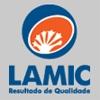Explore all the information on
Mycotoxins in feedstuffs
Welcome to the page about Mycotoxins in feedstuffs of Engormix; a source of knowledge on Mycotoxins in feedstuffs.
In the first half of 2020, Life Rainbow Biotech randomly collected 208 feed samples of raw materials and feed mills in farms and analyzed. The samples were tested for aflatoxins (B1, B2, G1, and G2), zearalenone, fumonisins (B1, B2, and B3) and deoxynivalenol by the ELISA Mycotoxin analysis kit (Romer Labs®). Results: 208 feed samples collected, and 72.6% were contaminated with Fumonisins and 84.6% contaminated with deoxynivalenol (table 1 ). All the...
Comments : 2
Recommendations: 1
Wheat—the most widely cultivated crop in the world—is under growing attack from harmful toxins. Across Europe, almost half of wheat crops are impacted by the fungal infection that gives rise to these toxins, according to a study led by fungal biologist Dr. Neil Brown from the U.K.'s University of Bath,...
Comments : 0
Recommendations: 0
1. Introduction Ochratoxin A (OTA) is a naturally occurring mycotoxin produced by the Aspergillus and Penicillium species that can be found as a contaminant of poultry feeds. OTA contamination can occur from cool temperate to tropical regions (Northern and Southern America, Northern and Western Europe, Africa and South Asia) [1]. Dietary contamination by OTA also poses a big risk for animal health and is a food safety concern due to the transfer of this...
Comments : 0
Recommendations: 0
1. INTRODUCTION Global programs are involved in addressing food and nutrition in the developing countries (WHO 2018). Improving nutrition is undoubtedly a challenging interdisciplinary proposition that involves availability and consumption of nutritious food. Covid-19 pandemic has further exposed the vulnerability of food systems in the low- and middle-income countries (LMICs). Green revolution was one milestone towards achieving food security when high yielding crop...
Comments : 0
Recommendations: 0
1. Introduction In Uganda, maize (Zea mays L.) is one of the most important crops in terms of production, consumption, and income generation. Because of its relevance, maize was one of the food security crops–and the only cereal–selected by the Ministry of Animal Industry and Fisheries of Uganda to implement a 5-year, multi-million USD agricultural intervention as part of the Development Strategy and Investment Plan (DSIP) during 2010–2015 (MAAIF, 2010). The...
Comments : 0
Recommendations: 1
1. Introduction Throughout the world, dietary starch and proteins are mainly obtained from cereals [1]. Other nutritional components of cereals include fiber, non-starch carbohydrates, lipids, minerals and vitamins [2]. Because of their high nutritive values, good health effects and their availability, cereals have been an essential source of human food for millions of years [3]. In the year 2022, estimated cereal production is 2799 million tons, with a high proportion of coarse...
Comments : 0
Recommendations: 0
INTRODUCTION Antimycotoxins additives (AMAs) are among the multiple approaches used to detoxify aflatoxin-contaminated feedstuffs (OGUZ, 2012). Not all commercially available AMAs have proven efficacy, which should be based on in vitro and in vivo findings (BRASIL, 2006; MALLMANN et al., 2007). Most in vitro studies employ artificial biological fluids or other models mimicking the animal’s gastrointestinal tract (GIT) (AVANTAGGIATO et al., 2003, 2007). Nonetheless,...
Comments : 0
Recommendations: 1
Evaluating the effect of a mycotoxin-deactivator can be quite challenging. How should we choose between in vitro and in vivo?...
Comments : 12
Recommendations: 2
Afla-V™ ONE offers the world’s first lateral flow strip test capable of measuring total aflatoxins (B1, B2, G1 & G2) in complete feeds and pet foods.
Using a simple, barcode-based universal calibration, Afla-V™ delivers numeric results in minutes while improving safety and sustainability for field, process and laboratory testing environments.
Afla-V ONE eliminates toxin-dependent calibration completely, reduces time to result...
Comments : 0
Recommendations: 0
It is not the Mycotoxins that replicate themselves or form themselves, but the various fungi or Mycelium which produce them. It is the fungi that require the conducive environment to produce mycotoxins and various fungi produce peculiar, or multiple Mycotoxins that range from Aflatoxin to Fuminoxin, DON and Zearalenone, etc. The conducive factors for these fungi must include appropriate substrate like corn, soy, groundnut, wheat, etc on which they require to grow. Water content in the...
Comments : 2
Recommendations: 2
Siska Croubels (Ghent University) speaks on the negative impact of mycotoxins and the different and complementary solutions that are needed to fight it, during IPVS2022 in Rio de Janeiro, Brazil....
Comments : 7
Recommendations: 1
Nancy Collette and Emma Myers from VICAM's technical services team demonstrate Afla-V ONE lateral flow strip test capabilities for total aflatoxin testing in complete feeds.
...
Comments : 0
Recommendations: 1
What are the key facts that should be recalled regarding mycotoxin binding? Answered by Dr. Vito D'Ascanio...
Comments : 2
Recommendations: 1
Afla-V ONE 2-80 ppb Method is the world's first single-calibration aflatoxin lateral flow strip test for complete feeds and pet foods. Highly sensitive and precise, Afla-V ONE is designed for use with the Vertu PREP lateral flow strip test reader and may be used virtually anywhere, with no special training or expertise needed.
...
Comments : 1
Recommendations: 1
Launched in 2016, MycoMan® was a pioneer app in assessing mycotoxin risk. Four years later, Adisseo is back with a 2.0 version with a better customer experience, updated data, and new functionalities!...
Comments : 0
Recommendations: 2
Dan Columbus (Prairie Swine Centre and University of Saskatchewan) talked about the effect of mycotoxins, particularly Deoxynivalenol, on short and long term feed intake, during this Swine It interview with host Laura Greiner....
Comments : 0
Recommendations: 1
Dr. Stephen Adejoro (Livestock Industry Foundation for Africa) shares with Engormix members his comments on this usual problem in raw materials and its consequences on vaccination, health and performance....
Comments : 1
Recommendations: 3
In 2021 mycotoxins annual survey, Life Rainbow Biotech randomly collected 393 feed samples of raw materials and feed mills in farms and analyzed. The samples were tested for aflatoxins (B1, B2, G1, and G2), zearalenone, fumonisins (B1, B2, and B3) and deoxynivalenol (DON) by the ELISA Mycotoxin analysis kit. Results: From January to December 2021, the import volume of feed corn was 4,128 thousand tons, and the United States is 35.26%, followed by Brazil and Argentina for...
Comments : 0
Recommendations: 2
Afla-V ONE is the world's first single-calibration lateral flow strip test method able to detect total aflatoxins in just minutes for complete feeds and pet foods. Designed for use with the Vertu TOUCH lateral flow strip test reader, Afla-V ONE answers a growing need for aflatoxin monitoring in complete feeds, offering on-time data for real-world preventive management. No special training or expertise is required, and Afla-V ONE may be used virtually anywhere....
Comments : 0
Recommendations: 0
VICAM’s Afla-V™ ONE answers one of today’s toughest animal feed safety challenges with a simple, full range aflatoxin test that delivers quantitative results in just minutes for complete animal feeds and pet foods....
Comments : 0
Recommendations: 0



.jpg&w=3840&q=75)













